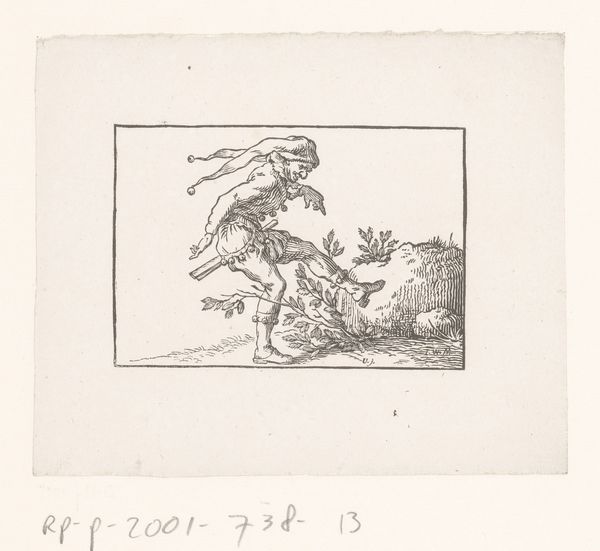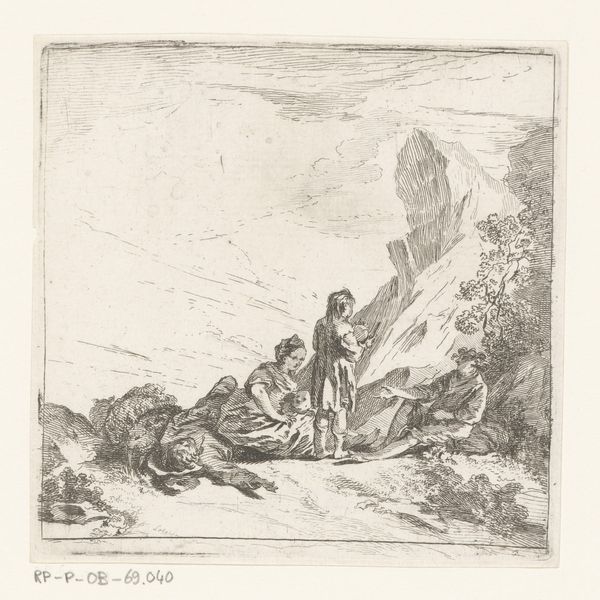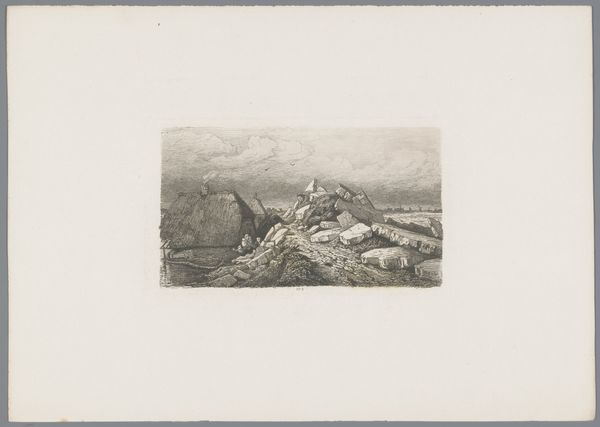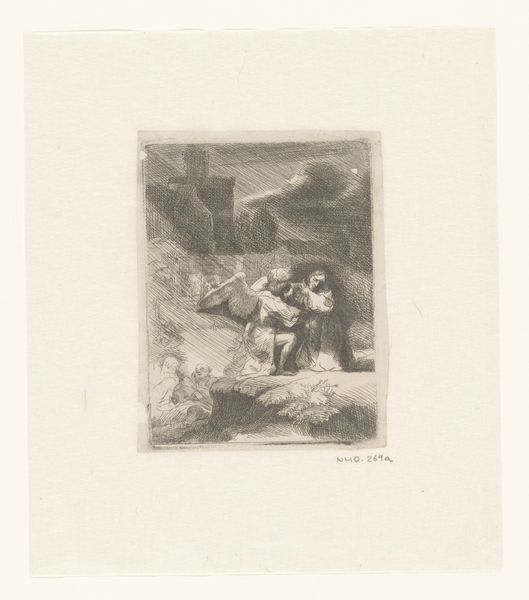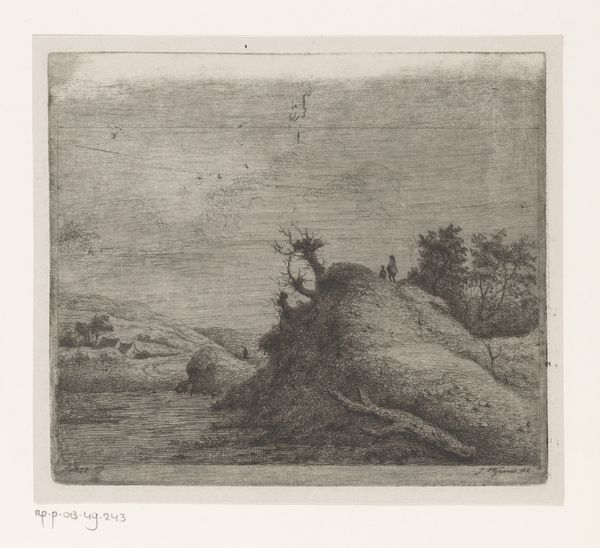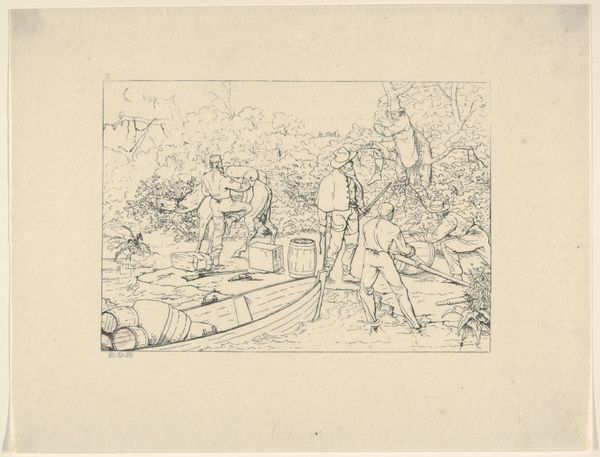
drawing, print, ink, engraving
#
drawing
# print
#
landscape
#
figuration
#
ink
#
line
#
genre-painting
#
engraving
Dimensions: height 55 mm, width 80 mm
Copyright: Rijks Museum: Open Domain
Johann Friedrich Gottlieb Unger created this etching of a goose girl sometime before 1804. An etching is made by drawing an image into a waxy, protective ground applied to a metal plate. The plate is then bathed in acid, which bites into the exposed lines, leaving an image that can be inked and printed. The goose girl and her flock stand out sharply against the white paper, due to the fineness of the etched lines. Look closely, and you will see the build-up of many tiny strokes to create tone and shadow. This effect speaks to the skilled labor involved, and is a process very different from painting or sculpture. Unger was a printmaker by trade, and this piece is quite small, intended for use as a book illustration, or perhaps to be sold in unbound form. Its intimate scale contrasts with the scene it depicts, which suggests a rural setting and a humble, hardworking figure, making her way in the world. This gives us a glimpse into the life of the artist, and the audience for whom he made his work.
Comments
No comments
Be the first to comment and join the conversation on the ultimate creative platform.
